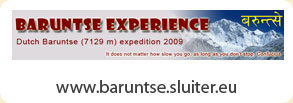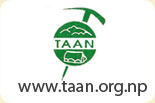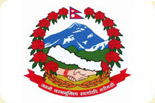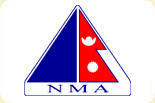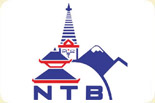- Trekking in Nepal
- Paragliding in Nepal
- Peak Climbing in Nepal
- Flight Reservation in Nepal
- Trekking Peak climbing in Nepal
- Bunjee Jumping in Nepal
- High Pass (ADVENTURE) Trek
- Hostel Accommodatin
- Hotel Accommodation in Nepal
- Jungle Safari in Nepal
- Mountain Bike in Nepal
- Travel / Tour in Nepal
- Vehicle Hire Service
Trekking in Nepal : Poon hill Trek & Chitwan National Park
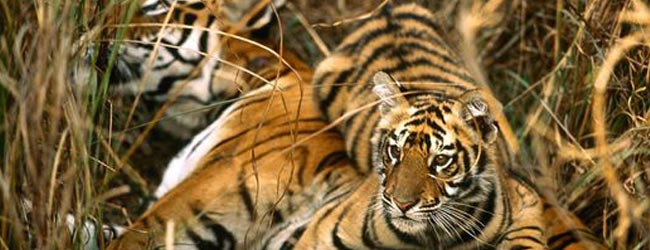 Ghorepani - Poon Hill (Pun Hill) which is located in Annapurna region, is truly called as all the best of the trekking in Nepal.
Ghorepani - Poon Hill (Pun Hill) which is located in Annapurna region, is truly called as all the best of the trekking in Nepal.
| Duration - 11 | Max Altitude: 3210 meter |
| Trek Name: Poon hill Trek & Chitwan National Park Trek Code: T 10 |
Max Group Size: 1 or above |
| Kathmandu - Pokhara - Nayapool - Tikedhunga - Poonhill - Tadapani - Ghandurk- Pokhara - Chitwan National park - Kathmandu | Cost: |
Ghorepani - Poon Hill (Pun Hill) which is located in Annapurna region, is truly called as all the best of the trekking in Nepal.
The trek offers the spectacular mountain scenery along with charming villages inhabited particularly by the Gurungs & Magars, dense rhododendron forests full of birds and deep sub-tropical valleys, all set below the Annapurnas with the picturesque peak of Machhapuchhare (Fishtail Peak) dominating the skyline.
One of the important highlight of this trip is to make a climb on Poon Hill, possibly the most spectacular mountain escape on Earth. When sun rises, it touches the snow-capped summits the Himalayan giants, Dhaulagiri (8,167m) and Annapurna (8,091m) along with a maze of other peaks, there gradually appear, just like magic that your eye could not believe.
Besides, during journey, you are rewarded by the natural beauties in your each & every footsteps.
Regarding the Chitwan National Park (CNP) is a world heritage property, and it also contains a Ramsar Site – Beeshazari Tal in its buffer zone. The CNP has a history of over 3 decades in park management and a rich experience in resolving conflicts between the park and the people. It is a rich natural area in the Terai, the subtropical southern part of Nepal. A total of 68 species of mammals, 544 species of birds, 56 species of herpeto fauna and 126 species of fish have been recorded in the park. The park is especially renowned for its protection of One Horned Rhinoceros, Royal Bengal Tiger and Gharial Crocodile.
Chitwan National Park is situated in south central Nepal in the sub tropical lowlands of the inner terai of Chitwan, Makawanpur, Parsa and Nawalparasi districts. It lies between 27°16.56’- 27°42.14’ Latitudes and 83°50.23’-84°46.25’ Longitudes. The altitude ranges from 110m to 850m above sea level. The park is bounded by the Rapti and Narayani River in the north, Parsa Wildlife Reserve in the east and Madi settlements and India border in the south. The physiography of the park consists of the Terai and Siwaliks. Three major rivers Narayani, Rapti and Reu, and their floodplains; and several lakes and pools are the major water sources of the park. Being the first protected area of Nepal, it has a long history of over three decades in park management and rich experiences in nature conservation. Chitwan was a big game area for the royal families, Rana rulers and their guests. The area comprising the Tikauli forest from Rapti River to the foothills of the Mahabharat extending over an area of 175 km2 was declared as Mahendra Deer Park in 1959. The area south of the Rapti River was demarcated as a Rhino Sanctuary in 1963. It was proclaimed as Royal
Chitwan National Park with an area of 932 km2 in 1973. After the peoples’ revolution in 2006, the park’s name was changed to Chitwan National Park. In recognition of its unique biological resources of outstanding universal value, UNESCO designated CNP as a World Heritage Site in 1984. In 1996, an area of 750 km2 surrounding the park was declared a buffer zone, which consists of forests and private lands including cultivated lands. The buffer zone contains a Ramsar Site – Beeshazari Lakes. The park and the local people jointly initiate community development activities and manage natural resources in the buffer zone. The government of Nepal has made a provision of plowing back 30-50 percent of the park revenue for community development in the buffer zone.
Regarding the Chitwan National Park (CNP) is a world heritage property, and it also contains a Ramsar Site – Beeshazari Tal in its buffer zone. The CNP has a history of over 3 decades in park management and a rich experience in resolving conflicts between the park and the people. It is a rich natural area in the Terai, the subtropical southern part of Nepal. A total of 68 species of mammals, 544 species of birds, 56 species of herpeto fauna and 126 species of fish have been recorded in the park. The park is especially renowned for its protection of One Horned Rhinoceros, Royal Bengal Tiger and Gharial Crocodile.
Chitwan National Park is situated in south central Nepal in the sub tropical lowlands of the inner terai of Chitwan, Makawanpur, Parsa and Nawalparasi districts. It lies between 27°16.56’- 27°42.14’ Latitudes and 83°50.23’-84°46.25’ Longitudes. The altitude ranges from 110m to 850m above sea level. The park is bounded by the Rapti and Narayani River in the north, Parsa Wildlife Reserve in the east and Madi settlements and India border in the south. The physiography of the park consists of the Terai and Siwaliks. Three major rivers Narayani, Rapti and Reu, and their floodplains; and several lakes and pools are the major water sources of the park. Being the first protected area of Nepal, it has a long history of over three decades in park management and rich experiences in nature conservation. Chitwan was a big game area for the royal families, Rana rulers and their guests. The area comprising the Tikauli forest from Rapti River to the foothills of the Mahabharat extending over an area of 175 km2 was declared as Mahendra Deer Park in 1959. The area south of the Rapti River was demarcated as a Rhino Sanctuary in 1963. It was proclaimed as Royal
Chitwan National Park with an area of 932 km2 in 1973. After the peoples’ revolution in 2006, the park’s name was changed to Chitwan National Park. In recognition of its unique biological resources of outstanding universal value, UNESCO designated CNP as a World Heritage Site in 1984. In 1996, an area of 750 km2 surrounding the park was declared a buffer zone, which consists of forests and private lands including cultivated lands. The buffer zone contains a Ramsar Site – Beeshazari Lakes. The park and the local people jointly initiate community development activities and manage natural resources in the buffer zone. The government of Nepal has made a provision of plowing back 30-50 percent of the park revenue for community development in the buffer zone.
| Itinerary: | |
Day 01: Arrive in Kathamndu International airport / transfer to hotel. Day 02: Drive from Kathmandu to Pokhara - 4-5 hours scenic drive by Tourist coach. Overnight at hotel. B.L.D. Day 03: One hour drive to Nayapul by private Car / Van, we then begin trek to Tikhedhunga Overnight at Guest House. B.L.D. Day 04: Trek to Ghorepani Overnight at Guest House. B.L.D. Day 05: Hike to Poonhill - back to Ghorepani after enjoy of Mountain view, and trek to Tadapani. Overnight at Guest House. B.L.D. Day 06: Trek to Ghandruk Overnight at Guest House. B.L.D. Day 07: Trek down to Birethanti - Nayapul - Pokhara.Overnight at hotel. B.L.D. Day 08: Drive to Chitwan National park such as village walk, Tharu culture program, Sun set Day 09: Chitwan National Park such as elephant ride, canoeing, elephant bath, bird watch etc Day 10: Drive to Kathmandu by Tourist coach. O/N at the hotel Day 11: Transfer to International airport / service end. |
|
| Trips Start Dates: | |
| Jan, Feb, Mar, Apr, May, Jun Jul, Aug, Sept, Oct, Nov, Dec |
|
| Price from Kathmandu (US dollars): | |
| US$ 540/ each 3 person in group, US$ 570/ each 2 person in group, US$ 740/ each for Single trekker | |
| Included in your trip: | |
|
|
| Not included: | |
|
|
| Book Trip Now | |

